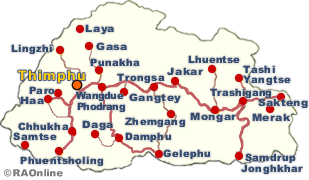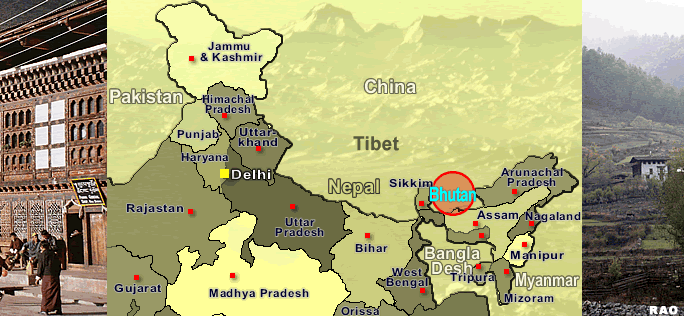| Bhutan - Ethnic Groups & People |
 |
Bhutan's People Ethnic groups |
|
 |
Bhutan Information |
|
|
 |
|
Tshangla:
An areal distribution
|

|
|
|
| Population total all countries 145,000. |
| 138,000 in Bhutan |
|
|
| SANGLA, SHARCHAGPAKHA, SARCHAPKKHA, SHACHOPKHA, SHACHOBIIKHA, TSANGLA, MENBA, MONPA |
|
|
| Sino-Tibetan, Tibeto-Burman, Himalayish, Tibeto-Kanauri, Tibetic, Bodish, Tshangla |
|
|
Tshangla,
the name of an ethnic group who speak Sharchokpa-lo, has become
more like a name of the language than ethnicity in modern linguistics with
many scholars (van Driem 1998, Andvik 1993, 2003, DeLancy 2003, Robins
2003) calling the language that people in Eastern Bhutan speak as Tshangla without having to attach lo 'language' with it.
 |
Older
speakers of Tshangla claim that they are called Tshangla because they are
believed to be the descendants of Lha Tshangpa "God Brahma". Most
of the young native speakers are not aware of this native term and identify
themselves as Sharchokpa 'easterners' and the language they speak
as Sharchokpa-lo 'language of the easterners'. The old term is more
retained by Bhutanese people who live outside Bhutan in places like Darjeeling,
Kalimpong, Kathmandu, etc. than people living within Bhutan.
|
 |
The
language is spoken in some other areas outside Bhutan and is known by different
names. In Tibet, people call it Tshona Monpa, but in linguistics,
it has come to be known as Cangluo Monpa and Motuo Monba depending
on the place where it is spoken. It is spoken in areas like Beibeng, Motuo,
Bangxing and Dexing, which are collectively called Pemakot (Padma-Kod).
It is believed that the Tshangla of Tibet have originated from Eastern
Bhutan and not vice versa. The difference between Tshangla spoken in Tibet
and the one spoken in Bhutan is that the former is tonal whereas the latter
is not. Tshangla
is also spoken in Tawang district of Arunachal Pradesh in India.
Specifically, it is spoken in Dirang and Khalagtang areas. Speakers of
Tshangla in Tawang call themselves Sharpas and their language "Sharpa-lo".
Tshanglas of Eastern Bhutan, especially from Radhi, Phongmey, Bartsham
and Bidung in Trashigang, also call them Sharpa and their language
Sharpa-lo.
In linguistics, the Tawang dialect has been called Central Monpa. Although these two languages are supposed to be mutually intelligible,
they are sometimes confusing and present some problems in communication.
For example, food, in Bhutan dialect is known as to (with stress on the
vowel) and the drink (local wine) that accompanies food as tochang. But
in the Tawang dialect, tochang is the 'food' and not the wine that
is served with food. Likewise, khungme means 'to guard' in Bhutan dialect
but it means, "to arrive" in Tawang dialect which is expressed by another
verb shegpe in Bhutan dialect, or by the honorific counterpart jonme. Another
difference is that Tshangla in Tawang is said to have developed a two-way
(high vs low) tone system.
There
is also a language called Takpa, which is referred to as Northern
Monpa in linguistics, in the western tip of Arunachal Pradesh. Although
this language is more like Tshangla, scholars (Robins etal) say it resemblesBumthangkha 'language of Bumthang' in Central Bhutan and is closer to Tibetan
than Tshangla.
Sherdukpen and Lishpa, the two languages spoken in the same Northeastern Arunachal Pradesh, share only a few similarities with Tshangla
despite their proximity in geographical location. Both Sherdukpen and Takpas
are Buddhists like the Tshangla and the rest of the language speakers in
Bhutan.
It
is quite surprising that some languages of Himachal Pradesh also share
great resemblances with the Bhutanese dialects. A language called Tod,
spoken in the upper valley of the river Bhaga, is more like Dzongkha than Tshangla. For example the word for man in Tod is mi, for fire is me,
for brother is acho, for louse is shi, for flesh is sha, for four is zhi,
for book is pecha, and lu for song, chu for water and many others which
are all as same as in Dzongkha. This is not to say that it doesn't have
any similarities with Tshangla. Besides the commonality in some of the
above terms, Tod has other similar terms with Tshangla such as meme 'grandfather',
maan 'medicine', bu 'insect/worm', etc., which are different in Dzongkha.
Another
language called Spitian 'the dialect of Spiti' (locally pronounced
as Piti), which is spoken in some parts of district Lahul and Spiti in
the same state of Himachal Pradesh, is equally similar to Dzongkha
and Tshangla like Tod. The following data from Sharma (1989) supports this
argument: kha 'mouth', che 'tongue', kho 'he', yuel 'village', da 'arrow',
dong 'face', tu 'private part of a lady', len 'reply', and many others
which are not mentioned here for reasons of space. These terms are exactly
the same in Dzongkha. And with Tshangla, the similar terms are: apa 'father',
bu 'insect', cho 'grandson' (the word for grandson in Tshangla is tsho,
the difference being only in initial 'cha' and 'tsha' sounds), pu 'hair
on the body', phu 'cave/blow from the mouth', and many others.
Similarly,
other languages like Nyamkad, spoken in Pooh subdivision of the
district Kinnaur, Chhitkuli, spoken in two villages Chhitkul and Rakchham,
Kanashi or Malani, spoken in the Kullu district, all in Himachal Pradesh,
resemble Tshangla and Dzongkha both in vocabulary items and the grammatical
structure in many ways.
So,
it may be said that these languages are a mixture of Dzongkha and Tshangla,
which indicate that Dzongkha and Tshangla belong to the same sub-group
or language family.
| Contributed
by Pema Wangdi Australian
National University |
 |
top
| Information on Bhutan |
 |
|





